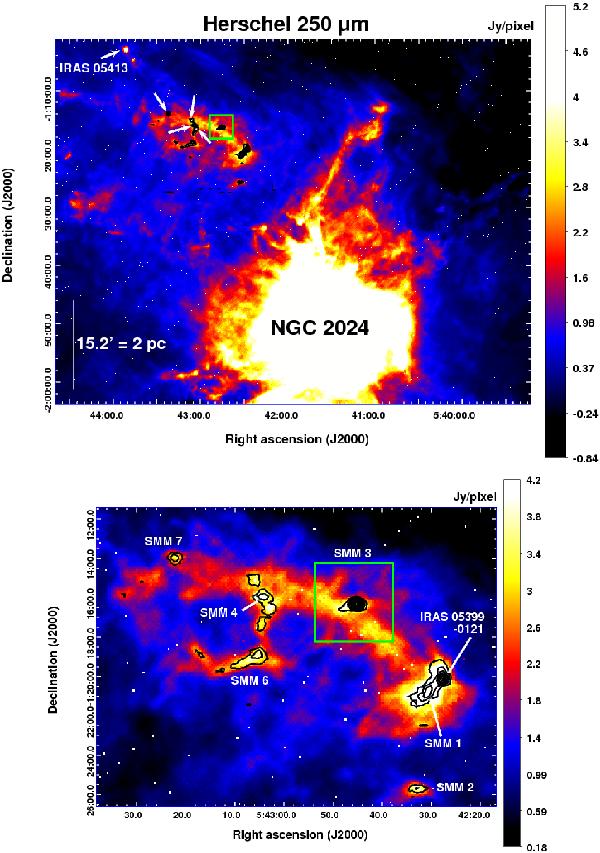Fig. 9

Top: a wide-field Herschel/SPIRE 250-μm far-infrared image towards the Orion B9 and NGC 2024 (Flame Nebula) star-forming regions. The image is overlaid with black contours of LABOCA 870-μm dust continuum emission. The contours go from 0.1 (~3.3σ) to 1.0 Jy beam-1 in steps of 0.1 Jy beam-1. The green rectangle outlines the 4′ × 4′ area mapped in 13CO(2−1) and C18O(2−1) in the present study. The white arrows indicate the cores which have a lower LSR velocity than the “main 9-km s-1 part” of Orion B9 or show multiple velocity components. The Class 0 protostar IRAS 05413-0104 in the northeast corner was at the border of our LABOCA map and only weakly detected (see Fig. 1 in Paper I). Note how the Orion B9 cores are associated with a NE-SW orientated filamentary structure, and the cores with lower radial velocity (or with multiple velocity components) lie at the NE part of the structure. A scale bar indicating the 2 pc projected length is shown in the bottom left, with the assumption of a 450 pc line-of-sight distance. Bottom: a zoomed-in view of the upper image towards Orion B9. Selected cores are labelled. The LABOCA contours are as in the upper panel.
Current usage metrics show cumulative count of Article Views (full-text article views including HTML views, PDF and ePub downloads, according to the available data) and Abstracts Views on Vision4Press platform.
Data correspond to usage on the plateform after 2015. The current usage metrics is available 48-96 hours after online publication and is updated daily on week days.
Initial download of the metrics may take a while.




